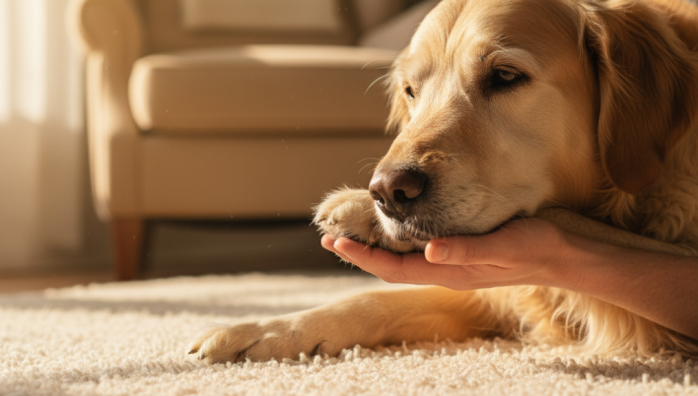Gentle Exercises for Senior Pet Mobility
by admin in Pet Care Basics 24 - Last Update November 20, 2025

I remember the exact moment my heart sank. My old Labrador, Buster, who used to leap onto the sofa with a single bound, hesitated. He looked at the couch, then back at me, and let out a little sigh. That sigh said everything. Getting older is a tough journey, for our pets as much as for us, and watching their mobility decline is one of the hardest parts. Over the years, I\'ve learned that we\'re not helpless, though. There\'s so much we can do to support them, and for Buster, gentle, consistent exercise became our quiet, daily ritual of love and care.
Why gentle movement is a game-changer for senior pets
When our pets slow down, our first instinct might be to let them rest as much as possible. And while rest is crucial, a total lack of movement can actually make stiffness and muscle atrophy worse. Think of it like a rusty hinge – a little bit of gentle, consistent oiling keeps it moving much better than letting it sit untouched. For my senior pets, both dogs and cats, the goal of exercise shifted. It wasn\'t about burning off energy anymore; it was about maintaining joint health, preserving muscle tone, and just as importantly, providing mental stimulation. It gave them a sense of purpose and a special time for us to connect.
My go-to gentle exercises for aging companions
Before I started any new routine with my pets, my first step was always a thorough check-up and a long chat with our veterinarian. I can\'t stress this enough – what worked for my dog might not be right for yours. Getting a professional green light and personalized advice is non-negotiable. Once we were cleared, these were the simple movements that made a world of difference.
- Passive range of motion (PROM) stretches. This sounds technical, but it\'s incredibly simple. While my dog was lying down and relaxed, I would gently take one of his legs and slowly move the joint through its natural range of motion – like gently bicycling his legs. I never forced it, just moved it until I felt the slightest resistance. It helps lubricate the joints and maintain flexibility. We\'d do this for a few minutes every evening.
- Slow, sensory walks. We traded our long, brisk hikes for short, meandering strolls. I let him set the pace, which was often very slow. The key was letting him sniff everything. This \'sniffari\' was as much for his brain as his body. We also tried to walk on softer surfaces like grass instead of hard pavement, which was much easier on his old joints.
- Sit-to-stand repetitions. This is a wonderful, low-impact way to strengthen the hind legs. I would hold a high-value treat just above his head to encourage him to stand up from a sitting position, and then slowly lower it to get him to sit back down. Just five or six of these in a session was plenty. It\'s like a little doggy squat session!
- Indoor obstacle courses. On rainy days, we\'d make a simple \'course\' in the living room with pillows or broom handles on the floor for him to step over. It wasn\'t about agility; it was about encouraging him to lift his feet a little higher than usual, which helps with body awareness and coordination.
Listening is the most important part
The most profound lesson I\'ve learned is to listen to what my pet is telling me. Some days they have more energy than others. If I saw any sign of fatigue, discomfort, or reluctance, we\'d stop immediately. This journey isn\'t about pushing them; it\'s about supporting them with patience and grace. These small, daily efforts didn\'t turn back the clock, but they absolutely improved the quality of his golden years, and that was everything to me.














